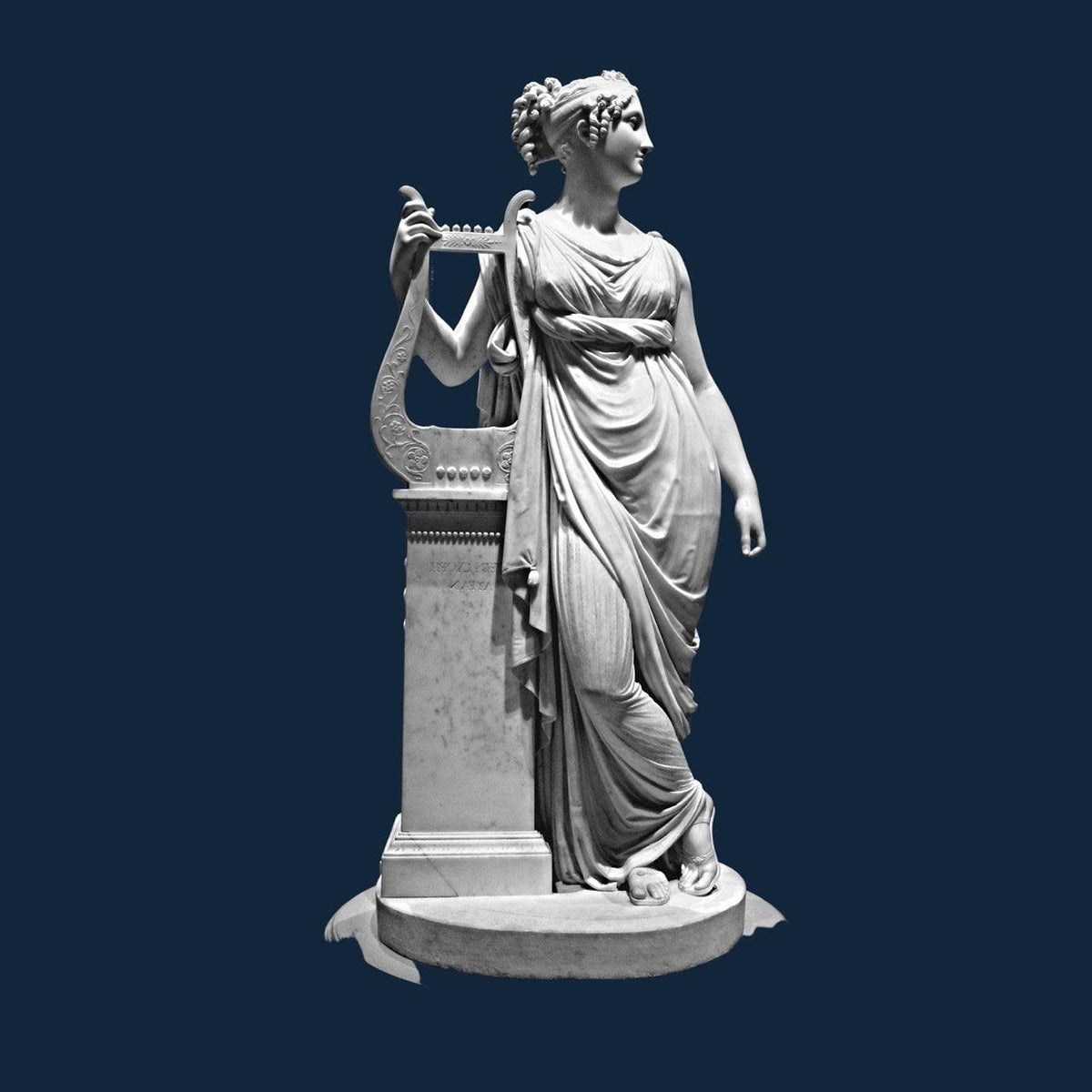Terpsikhore: The Muse of Dance and Song
Jul 02, 22

Terpsikhore: The Muse of Dance and Song
The muse of the ancient Greek mythological figure Thalia is known as the Muse of Comedy and Tragedy.
However, there’s another muse known as the Muse of Dance and Song called Terpsikhore. This blog will explore what she is, why she is important, and great examples of her presence in ancient Greek culture.
What is the Muse of Dance and Song?
The Muse of Dance and Song is the inspiration for the arts. She is the muse who inspires artists and dancers to create and choreograph. She is the muse of choreography and composition.
The word “muse” is from the Greek word μουσιόρ, which means “daughter of Mnemosyne”, Mnemosyne being a Titan goddess of memory. In the ancient Greek myth, Mnemosyne was the Titan goddess who, together with her daughter, the Muse of Dance and Song, created the lyre.
The Muse of Dance and Song was known to inspire artists to create and compose. She would be able to remember every musical note and rhythm in order to create the most beautiful, intricate, and moving music ever.
The Importance of the Muse of Dance and Song
The Muse of Dance and Song was an important figure in ancient Greek culture and religion. The ancient Greeks believed that music was the language of the gods.
Therefore, they believed that the Muse of Dance and Song was an important figure because she was the reason that the ancient Greeks were able to create and compose some of the most beautiful and moving music ever.
Examples of Terpsikhore in Ancient Greek Culture
The following are examples of Terpsikhore in ancient Greek culture:
In The Odyssey, Homer mentions that when he was sailing from Ithaca to return home from the Trojan War, he saw people dancing and singing around the Temple of the Muses. He saw a beautiful silhouette of the dancing and singing people, which inspired him to write about the Trojan War and his journey home.
In The Iliad, Homer mentions that the Muse of Dance and Song inspired the great warrior Achilles to fight. He mentions that Achilles had a spear, which he held with his two hands while dancing and singing. This shows how the Muse of Dance and Song could inspire soldiers to fight in the greatest battles ever.
In The Odyssey, the Muse of Dance and Song was known to inspire the arrival of the Argonauts. The Argo sailed across the Mediterranean Sea in order to find the Golden Fleece. They came upon the Muse of Dance and Song, who helped them find the Golden Fleece.
In The Iliad, the Muse of Dance and Song was known to inspire Odysseus to return home from the Trojan War. He had been wandering for 20 years when he met the Muse of Dance and Song. She helped him get home by giving him a song about his journey and his journey home.
The ancient Greeks also believed that the Muse of Dance and Song was the reason why artists are able to create some of the most beautiful and moving music ever. Therefore, they believed that the Muse of Dance and Song was an important figure in their religion and culture.





